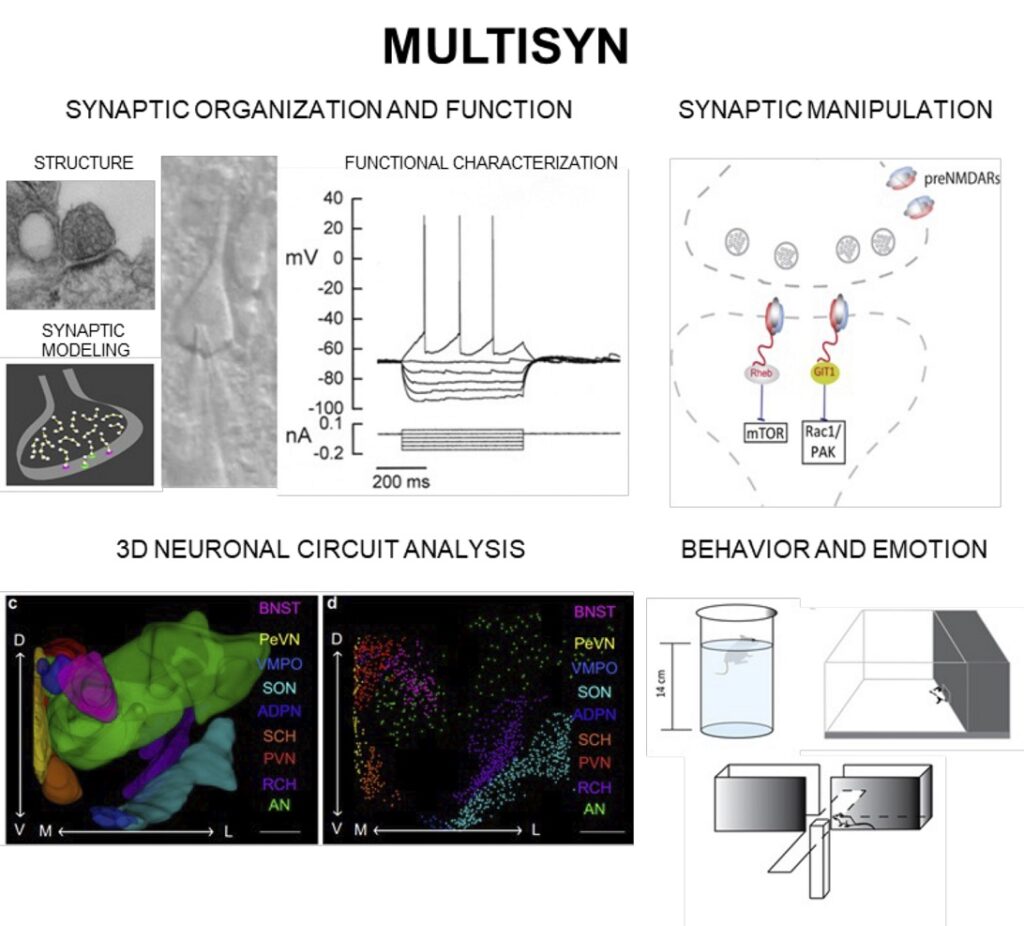PROMETEO PROGRAM Project
Prometeo CIPROM 2022/8
Founded by:

RESEARCH TEAM
Isabel Pérez-Otaño (IP)
Juan Lerma (IP)
John Wesseling
Sandra Jurado
Ramón Reig
Thomas Blanpied
Jose Esteban
Multiscale control of synaptic plasticity: Roles in neuronal circuit function and behavior
(MULTISYN)
 Neuropsychiatric disorders are major burdens on public health with limited treatment options. They are typically caused by malfunctions in information processing and storage within the neural circuits that make up our brains. A key concept that emerged from human genetic and mouse model studies is that many causative genes or environmental triggers converge on affecting processes that mediate circuit plasticity—often operating at the level of synapses, the complex miniature machines that connect neurons with each other into functional circuits.
Neuropsychiatric disorders are major burdens on public health with limited treatment options. They are typically caused by malfunctions in information processing and storage within the neural circuits that make up our brains. A key concept that emerged from human genetic and mouse model studies is that many causative genes or environmental triggers converge on affecting processes that mediate circuit plasticity—often operating at the level of synapses, the complex miniature machines that connect neurons with each other into functional circuits.
Synapses provide targets for modulating brain function at multiple time-scales: from dynamic changes in synaptic strength (occurring in milliseconds) involved in fast computations to plastic changes (lasting hours, weeks or years) that reshape circuit connectivity during development, adaptation and memory encoding. Diverse sets of synapses—across brain regions, neuronal populations and specific brain circuits, vary widely in their ability to express these different forms of plasticity. Yet despite progress over the last 2 decades, our understanding of how synapses process and store information to encode behavior is still rudimentary. Relatedly, we do not have cures or effective treatments for severe diseases such as autism, schizophrenia, depression or neurodegenerative disease where synapse failure is the culprit and that cause much suffering to patients, their families, and society as a whole.
GENERAL OBJECTIVE
MULTISYN brings together an international team of scientists with state-of-the-art complementary expertise to probe aspects of synapse plasticity that operate over short- or long-term time-scales to modify the function of neuronal circuits, and that offer untapped therapeutic potential. The goal is to deepen our understanding of synaptic function to allow identification of selective mechanisms that can be targeted to correct circuit and behavioral dysfunction. To this end, we apply a range of approaches including molecular genetics, cell biology and biochemistry, super-resolution imaging microscopy, 3D-ultraresolution circuit tracing, ex and in vivo electrophysiology, chemo/optogenetic or natural manipulations of activity, and behavioral analysis.
SPECIFIC OBJECTIVES
The work is structured in two general objectives that build on unique knowledge, strengths, and tools developed by our team. Objective 1 investigates fundamental principles of synaptic adaptation. We focus on molecular mechanisms that program heterogeneity of short- and long-term forms of synaptic plasticity, the role of neuromodulation, and define how selective manipulations modulate brain circuit function and domains of cognition and adaptive behavior affected in disease. Objective 2 takes a step towards translating the basic knowledge and assay novel strategies to restore synaptic function, plasticity and behavior. The goal is to identify causal relationships that can be targeted to treating brain diseases such as autism-spectrum disorders or cognitive impairments observed across pathologies such as schizophrenia, Alzheimer´s disease or Down syndrome.

 English
English